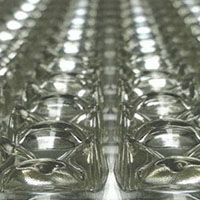3D printing technologies are assisting new efforts to curb light pollution worldwide.
The trigger for all the recent activity seems to be the explosion and rapid advancement of LED lighting technology. Clearly when you see a satellite view of a night-time area, you’ll no doubt see lighting infrastructure so widespread as to resolve the shape of each country (North Korea aside). All of this visible light is in fact wasted lumens and wasted watts to generate them.
New LED technology reduces the cost per lumen, but there’s apparently much more to the story. Lighting rigs requires both lenses and mirrors to efficiently distribute light but the new LED technology hasn’t had appropriate standards, causing continuous development of new lenses and mirrors, an expensive process. Increasingly advanced LED technologies continue to emerge, further complicating the situation and resulting in yet more redevelopment.
This confusion of standards, which by the way causes significant challenges when attempting to interoperate LED installations, could be solved by the Zhaga Consortium, a lighting industry group pledged to set new standards.
Meanwhile, 3D printing technology is being used to resolve some of the challenges. One example is LUXeXceL, who have developed “Printoptical” technology. Their process permits printing of “fully functional” optical elements like lenses, which as you can imagine, would be well received in today’s dynamic LED lighting market.
The Printoptical process involves a specialize UV-curable resin that precisely forms objects with accuracy suitable for use as working lenses. Because these 3D printed lenses can essentially be made on demand, there is no need for the traditional molds or milling processes, thus meeting the needs for modern lighting design.
Via LUXeXcel



